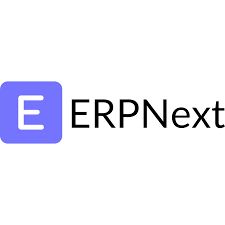Learn and understand the steps to create custom Doctypes in ERPNext effectively to unlock the full potential of your ERP system with unparalleled efficiency and adaptability.
What is ERPNext?
ERPNext is a free, open-source web-based powerful ERP (Enterprise Resource Planning) system designed by an Indian software development company named Frappe Technologies Pvt. Ltd. aiming at small and medium sized businesses to help them manage their operations, including accounting, inventory management, project management, and many more. This system is most suitable for manufacturing, retailing, and distribution businesses. More functionality can be integrated into the system to make working of different departments easier. The software is built on the MariaDB database system using a Python framework called Frappe. The software can also be used in schools, healthcare, agriculture, and non-profit organizations. One of the key features of ERPNext is customizability and flexibility, allowing businesses to adapt the system to their distinct needs. To achieve this customization, one can create custom Doctypes.
What are Doctypes?
Doctypes are short forms of ‘Document Type’. Doctypes are fundamental data structures in ERPNext that define the structure and behaviour of the document in the system. Each Doctype represents a specific entity or object in your application, such as a customer, sales order, employee, and many more. Doctypes are useful for businesses as they provide customizability to refine the ERP System to meet their operational needs by creating a new document(s) or modifying the existing ones ensuring a smooth business flow. In Frappe, there are 4 types of doctypes catering to different business needs: Single Doctypes, Child Table Doctypes, Submittable Doctypes, and Tree Doctypes.
How to Getting started with custom Doctypes?
Creating a Custom Doctypes in ERPNext involves defining the structure and attributes that can be created by following the steps given below:
- Log in to your ERPNext account.
- Navigate to the “Customization” module, found in the setup or settings section.
- Click on the “New” button to create a new custom doctype.
- Provide a name, label, and description to the custom doctype.
- Specify each field and define its name, label, and data type. If required, set rules, default values, and properties for each field.
- To determine who can access and modify the doctype, configure the permission. The permission can be set for roles or users.
To streamline the work of information and tasks related to the custom doctype, you can create a new or modify an existing workflow. Before deploying the custom doctype for regular use, it is recommended to test the doctype created or modified thoroughly within your ERP system. Make sure the doctype is working as expected and meets the requirements properly. Make any adjustment required, or recommended by user feedback and testing results. This can be useful to fine-tune the custom doctype for better performance. Once satisfied with the performance of the custom doctype, the doctype can be deployed for regular use within your ERP system.
Creating custom doctypes in ERPNext can be powerful to adapt your ERP system to your business’ needs. Custom doctypes helps in effective data collection and management, maintaining a streamline workflow, and enhancing user experience by adapting to the unique business processes. Doctypes can be very useful in today’s fast moving business environment by giving a competitive edge to your business over others by allowing businesses to alter and enhance their ERP systems. By following the steps given in the article, you can create a doctype and use it to enhance your business.
Would you like to expl ore more such informative articles and blogs? We provide a range of informative and interesting articles across different domains. Subscribe today to be part of our community!


